Eberle INSTAT 868-a1A Bedienungsanleitung
Eberle
Thermostat
INSTAT 868-a1A
Lies die bedienungsanleitung für Eberle INSTAT 868-a1A (2 Seiten) kostenlos online; sie gehört zur Kategorie Thermostat. Dieses Handbuch wurde von 46 Personen als hilfreich bewertet und erhielt im Schnitt 4.7 Sterne aus 23.5 Bewertungen. Hast du eine Frage zu Eberle INSTAT 868-a1A oder möchtest du andere Nutzer dieses Produkts befragen? Stelle eine Frage
Seite 1/2

5. Commissioning
BR 1 is closed
5.1 Establishing the radio link
On completion of the installation work, a link between
the INSTAT 868-r… transmitter and the radio receiver
must be established. To do this, follow this: (see g. 1)
a) Set the transmitter to “Learning mode” (see
Operating instructions for transmitter)
b. For function-1, – switching mode –
activate “Learning mode” on transmitter (A) to do
this: press the button brieyz
A signal tone sounds, the signal lamp lights up
and the output is switched on briey. When the
transmitter is recognised, the signal tone ceases to
sound and the signal lamp extinguishes.
c. Terminate the “Learning mode” on the transmitter
d. Test the radio links which have just been established
(see below picture 3 and Table 1))
Commissioning the enhanced functions see
manual “Enhanced functions for 1 channel
receiver INSTAT 868-a1”
Fig. 1
One transmitter (INSTAT 868-r) controls one receiver.
INSTAT 6-a1
INSTAT 6-r1
1
A
Fig. 2
One transmitter (INSTAT 868-r) controls one receiver
A
1
Fig. 3
One transmitter (INSTAT 868-r) controls a couple of
receivers
INSTAT 6-a1
INSTAT 6-r1
INSTAT 6-a1
1
A
A
Test of the function „switching-mode“
Receiver: press Reset
the lamp must ash one time only
Transmitter: adjust to 30°C
after ~30 sec
the output switches on
Transmitter: adjust 5°C
after ~30 sec
the output switches o
Contents:
1. Use
2. Features
3. Function description
3.1 Basic Functions
3.1.1 Function - 1, - Switching mode
3.1.2 Reversing the control action
3.1.3 Testing the radio link range
3.1.4 System demonstration
3.1.5 Signal lamp function
3.1.6 Jumper function
3.2 Enhanced functions
4. Installation
5. Commissioning
5.1 Establishing the radio link
5.2 Valve test
5.3 Quit/Reset
5.4 Power failure
5.5 Faults
5.5.1 Double addressing
5.5.2 Short time losses of the transmission
signal
5.5.3 Long time losses of the transmission
signal
5.6 Troubleshooting
6. Technical data
7. Dimensions
8. Wiring diagram
9. Examples
10. Short form instructions
1. Use
Receiver for INSTAT 868-r… (radio transmitter)
for switching:
• actuators of radiator heaters
• heating systems with switching applications
• circulating pumps (decentralised pump control)
• etc.
2. Features
• Volt-free switching of:
➩ 24 … 250 V AC loads
• Output functions (optional):
➩ Heating ON / OFF
➩ Temperature setback ON / OFF e.g. for boilers or
other controllers
➩ Pump control for up to 6 transmitters, extendable
• Reversing of control action for:
➩ connecting actuators “currentless open” instead
of “currentless closed”
➩ changing from summer to winter mode
(cooling instead of heating)
• Valve test function
• Radio test and system demonstration
• One transmitter can control several receiver
modules
• Self-learning address settings through
“Learning mode” in the transmitter
• button for setting of functions
• Reset button
• Signal lamp indicates initial state, faults etc.
• Monitoring of valid radio link
• Audible signal in case of faults (can be switched o)
• Emergency operation in case of loss of radio link
3. Function description
The INSTAT 868-a1 receiver converts radio signals
received from a transmitter, e.g. INSTAT 868-r … into
control signals for loads. The loads are switched by
means of a relay.
The switching state of the output is indicated by a
signal lamp.
For switching characteristics, see Installation instruc-
tions for the transmitter under item “Function descripti-
on”. For controlling the electric loads, the output can be
congured in dierent ways.
3.1 Basic Functions
3.1.1 Function - 1, - switching mode -
“One transmitter controls one switching
output”
One transmitter controls the output for heating/cooling
ON/OFF.
This function is active, if jumper BR1 is closed.
Note: For heating systems, which are in stand by mode
during summer time (e.g. electric heating), the valve
protection has to be switched o (in the transmitter).
If the valve protection is not switched o, a daily 3min.
heating will take place.
3.1.2 Reversing the control action
The switching characteristics of the output and the
signal lamp are reversed in respect of all functions
(also pump control). Due to this feature, the following
functions can be implemented.
• connecting actuators NO
• changing from summer to winter mode
(cooling instead of heating)
For cooling (summer mode) or actuators NO:
single-pole plugging of J1 jumper (One-pole plugging
prevents loss of jumper)
For heating (winter mode or actuators NC)
(= as delivered condition)
double-pole plugging J1 jumper .
3.1.3 Testing the radio link range
To determine the radio link range, follow this:
Set the transmitter to “Learning mode”:
1. Press the z button and the ”Reset” button simulta-
neously
2. Release the ”Reset” button rst, then the z button
The signal lamp lights up. The signal tone and the
output operate in the switching mode, approx.
2 sec. ON, 8 sec. OFF.
3. Now, while holding the transmitter in your hand,
walk away from the receiver until you reach the point
where the signal tone is no longer audible and the
signal lamp stops ashing. This point is the maximum
possible radio link range.
4. Always terminate this function by pressing the “Reset”
button.
5. Quit the “Learning mode” on the transmitter
As far as a free transmitter is used, existing radio links
will not be aected.
3.1.4 System demonstration
To demonstrate the radio range, see section 3.1.3
“Testing the radio link range”. If necessary, a lamp can
be connected to the output.
3.1.5 Signal lamp function
The signal lamps provide the following information:
• Output state … ON/OFF in a interval of 10 min.
or steady light may be possible
• Faults … Blinking; Duration varies
depending on type of fault
• Learning mode … ON until the link is established
or the Reset button is pressed
• Valve test … ON as long as the “Reset” is
pressed
• Testing the
radio link range … Flashing, 10 sec. interval
• Monitoring of
channels … after “Reset”
3.1.6 Jumper function
J1: open to reverse control action = cooling
J2: open to switch o the beeper
BR1: closed = only switching mode possible
open = all functions possible
One-pole plugging prevents loss of jumpers
3.2 Enhanced Functions
The functions
• pump logic control
• Time switch (Maser/Slave)
• pilote output
are described in the additional manual „Enhanced
functions for 1 channel receiver INSTAT 868-a1, no.
468931003281.
These functions are available by opening Jumper BR1.
4. Installation
Installation: e.g.
• In distribution board on DIN rail (by snap-on moun-
ting SBF 3/6)
• Directly on the wall
• If necessary, on conduit box , by means of ARA 1S
pattress.
Electrical connection
To make this connection, follow this:
Attention:
• Danger of electric shock, disconnect device from
power supply
• The device is not designed for switching „safety
extra low voltage“ (SELV)
• Loosen cover fastening screw
• Remove top part of housing
• Make the connection in compliance with the circuit
diagram (see top part of housing)
• If necessary, knock out penetration for actuator drive
cable (lower right-hand corner)
Make sure that the strain relief for the actuator drive
connection ts tight.
Caution!
The radio receiver may be installed only by a
specialist in compliance with the circuit diagram
enclosed in the top housing cover or in compliance
with these instructions. The current safety regula-
tions must be observed. Appropriate installation
measures must be taken to achieve the require-
ments of protection class II.
This radio receiver which can be installed separately,
is designed exclusively for temperature control in
dry and closed rooms and standard environments.
This electronic device was created according EN
60730, it operates according working principle 1C.
Errors possible /Subject to alterations.
Installation and
Operating Instructions
Radio receiver
.-a1A
U 468 931 003 277-5

Table 1: If the radio link does not work, check the following:
Direction of action = normal = jumper J1 is plugged to two poles.
Check the following: Yes No
1. Receiver. Is power supply OK? Continue with 2 Check fuse, if necessary
2. Receiver: Does the signal lamp ash?
Can the warning tone be heard?
(wait for an hour, if necessary)
Transmission signal is
missing see 3., 5.6
Continue with 4
3. Transmitter: Is the battery OK? Continue with 4 Insert new batteries
4. Transmitter: adjust to 30°C. Is the output
switched on after approx. 30 sec?
(Lamp light up).
Continue with 5 The output was already
switched on. Continue with 5
or the transmission signal is
missing, continue with 6
5. Transmitter: adjust to 5°C. Is the output
switched o after approx. 30 s
(Signal lamp does not light up)
Everything OK The transmission signal is
missing, continue with 6
6. Transmitter-actuator-receiver: Check wiring, if
necessary, reprogram the connection to the
Radio receiver. Has the remedial action taken
under points 4 and 5 been successful?
Everything OK Continue with 7, if necessary
check the Radio link range,
see section 3.1.3 “Testing the
radio link range”
7. Reduce the distance between the receiver and
the transmitter to approx. 2 m.
The thermostats are
working properly
The transmitter or the Radio
receiver are defective
Short form instructions for the radio receiver INSTAT 868-a
Test the radio range
See
3.1.3 · Adjust transmitter to “Learning mode”
· Press z button + “Reset” button simultaneously
· After that, release “Reset” button and then the buttonz
· Signal lamp lights up - signal tone + output switches cont.
· Press “Reset” button for termination
Function 1
“Switching mode”
(Jumper BR1 has to be closed)
5.1 · Adjust transmitter to “Learning mode”
· Briey press buttonz
· Signal tone sounds - signal lamp + output switch on briey
· Transmitter recognised - signal tone + signal lamp
extinguish
Valve test 5.2
· Press the button - output switches ON as long as z z
button is pressed
· Release z button. And then press “Reset” button within
10 sec. for termination
Reversing control action 3.1.2 · Summer mode ((valves NO) J1 one-pole plugging
· Winter mode ((valves NC) J1 double pole plugging
Signal lamp:
Blinking + no signal tone sounds
Blinking + signal tone
Double blinking
5.5 · Brief losses of control signal (from 1 hour up to 10 hours)
· Longer losses of control signal (more than 10 hours)
· Double addressing - reprogram the radio link
Note
In some rare cases it may not be possible to esta-
blish a permanent radio link between the radio
transmitter and the radio receiver. We therefore
recommend to check the reliability of operation
at the specic location. In order to establish longer
transmission distances (up to 90 m) or in case of
critical locations, the RF repeater INSTAT 868-rep
can be used.
7. Dimensions
t = 27,8 mm; = 75 mm
8. Circuit diagram
5.2 Valve test
When the button is pressed:z
l
The output is switched on
(as long as the button is pressed)z
l
The signal lamp lights up
l
The signal tone sounds
After releasing the button, the “Reset” button must z
be pressed within 10 seconds. As a result of this, the
signal lamp extinguishes and the signal tone ceases to
sound. After 10 seconds, the “Learning mode” starts; a
link would be established to a transmitter which hap-
pens to be in the “Learning mode”.
5.3 Quitting/Reset
To – quit the “Learning mode”
– acknowledge a failure or
– terminate the Radio link range test or
– terminate the valve test
– in the event of any other inexplicable phenomena
push the “Reset” button. This restores the output to its
initial state (also reversed control action). When new
actuating signals are received (possibly after 10-20
min.), the output will return to its previous state. Any
existing radio link will be maintained.
6. Common technical data
Model No. INSTAT 868-a1A
EDP No. 0536 30…
Operating voltage 230 V AC (195…253 V)
50/60 Hz
Load circuit:
24 ... 250 V AC
Relay, 1 NO contact,
volt-free*
16 A max. cos = 1ϕ
2 A max. cos = 0,6ϕ
Number of actuators
(3 W electrothermal)
230 V AC
AC 24 V
Power consumption
20 max.
8 max.
Approx. 12 VA
Operating temperature 0…+40 °C
Storage temperature –20…60 °C
Antenna Internal
Push-button
for programming
for reset
1
1
Signal lamp 1
Protection class of
housing
IP 30 / insulated
(Moisturecondensation
not permitted)
Class of protection II** (see Caution page 1)
Pollution degree 2
Software Class A
Rated impulse voltage 4 KV
Ball pressure test
temperature
75 ± 2 °C
Voltage and Current
for the for purposes of
interfernce
230 V; 0,1 A
Weight Approx. 100 g
Note:
*) The volt-free contact of this mains-operated
radio receiver do not ensure the requirement
for the use of safety extra-low voltage (SELV).
**) Will be complied with, if the radio receiver is
installed on a level, non-conducting surface.
5.4 Power failure
If there is a power failure in the transmitter or in
the receiver, all data is saved. When power supply is
restored, normal operation is resumed.
5.5 Faults
If faults occur, an alarm is triggered. In this case, the
signal lamp ashes with varying duration, if necessary,
a signal tone sounds.
5.5.1 Double addressing
In this case, the signal lamp shows continuous double
ashing. It is cancelled by reprogramming one of the
transmitters. The signal tone sounds.
5.5.2 Short time losses of the transmission
signal
If the transmitter fails to receive an actuating signal
within a period of 1 and up to approx. 10 hours, the
signal lamp blinks permanently one time. No signal
tone sounds.
When recurrence of the transmission signal, the alarm
automatically ceases.
The manufacturer hereby declares that this device
conforms with the basic and other relevant requi-
rements laid down by directive RED (2014/53/EU).
The declaration of conformity can be downloaded
from „www.funk868MHz.de“.
This thermostat can be used in all EU and EFTA
countries.
5.5.3 Long time losses of the
transmission signal
If the receiver has not received an actuating signal for
more than 10 hours, the signal lamp shows a permanent
short ash. The signal tone sounds.
When the transmission signal recurs, the alarm auto-
matically ceases to sound.
For all types of faults, the following applies:
• The output is switched with 30 % (3 min. ON, 7 min.
OFF), this means heating with 30 % of capacity.
Note:
• Under unfavourable local conditions it is possible
that the radio link between the transmitter and the
receiver is insucient, for instance, if the receiver is
arranged in an interference-proof metal housing.
Please check whether the situation improves when
the transmitter is arranged in a dierent position.
For checking the radio link, see section 3.1.3
5.6 Troubleshooting
1. Valve does not open:
➩ Has it been properly wired up?
➩ Has the radio link been established
(see section 5.1)
➩ See point 3 in the Table 1 as well as point 3
onwards
➩ Press the Reset button (see 5.3)!
2. Signal lamp ashes and possibly a beeper
is sounding
➩ For basic fault procedures, see 5.5
➩ “Learning mode”, valve test, radio range test
have not been interrupted!
(see sections 5.1, 5.2, 3.1, 3.5.3)
➩ Two transmitters are transmitting with the
same address; reprogram one of the radio links!
see 5.5.1.
➩ No radio link, see point 7 in the Table 1.
➩ In the case of inexplicable faults it is recommen-
ded to press the “Reset” button on the receiver
and, if necessary, on the transmitter.
*
This product should not be disposed of with household waste. Please recy-
cle the products where facilities for electronic waste exist. Check with your
local authorities for recycling advice.
Produktspezifikationen
| Marke: | Eberle |
| Kategorie: | Thermostat |
| Modell: | INSTAT 868-a1A |
Brauchst du Hilfe?
Wenn Sie Hilfe mit Eberle INSTAT 868-a1A benötigen, stellen Sie unten eine Frage und andere Benutzer werden Ihnen antworten
Bedienungsanleitung Thermostat Eberle

2 Oktober 2024

2 Oktober 2024

26 August 2024

26 August 2024

26 August 2024

26 August 2024

25 August 2024

25 August 2024

25 August 2024

25 August 2024
Bedienungsanleitung Thermostat
- Netatmo
- Mainstreet Equipment
- Fantini Cosmi
- Sinustec
- Heatmiser
- Elgato
- ACV
- Hager
- Bulex
- Webasto
- HQ
- Delta Dore
- Econo-heat
- Bryant
- Easy Timer
Neueste Bedienungsanleitung für -Kategorien-
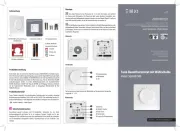
1 August 2025
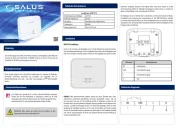
31 Juli 2025

31 Juli 2025
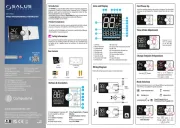
31 Juli 2025
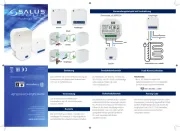
31 Juli 2025
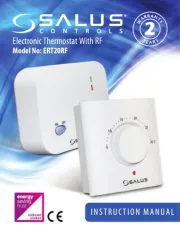
31 Juli 2025
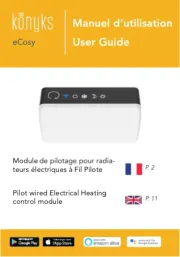
30 Juli 2025
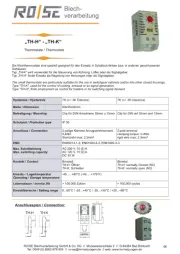
28 Juli 2025
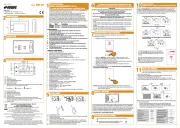
27 Juli 2025
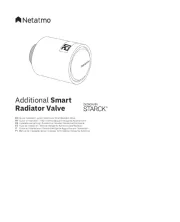
27 Juli 2025